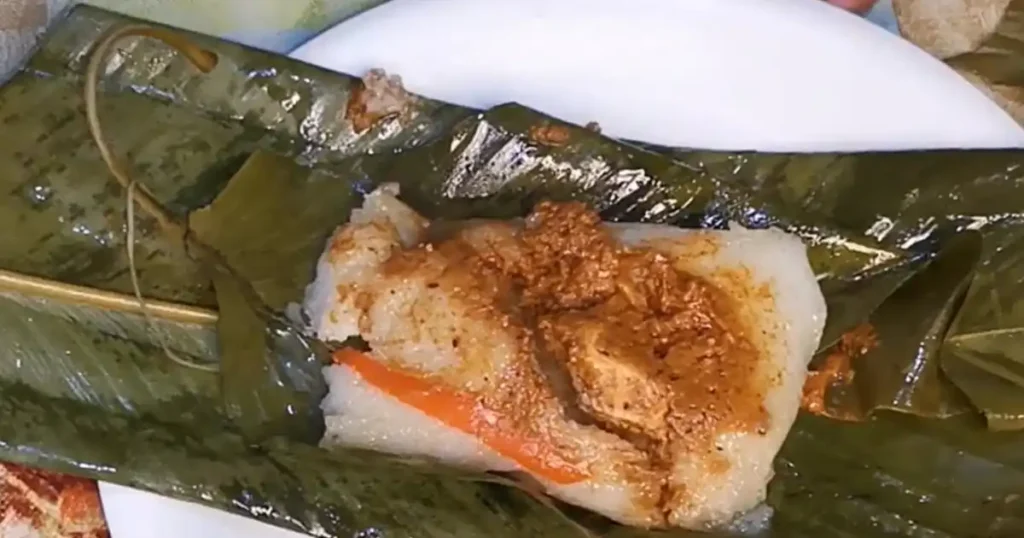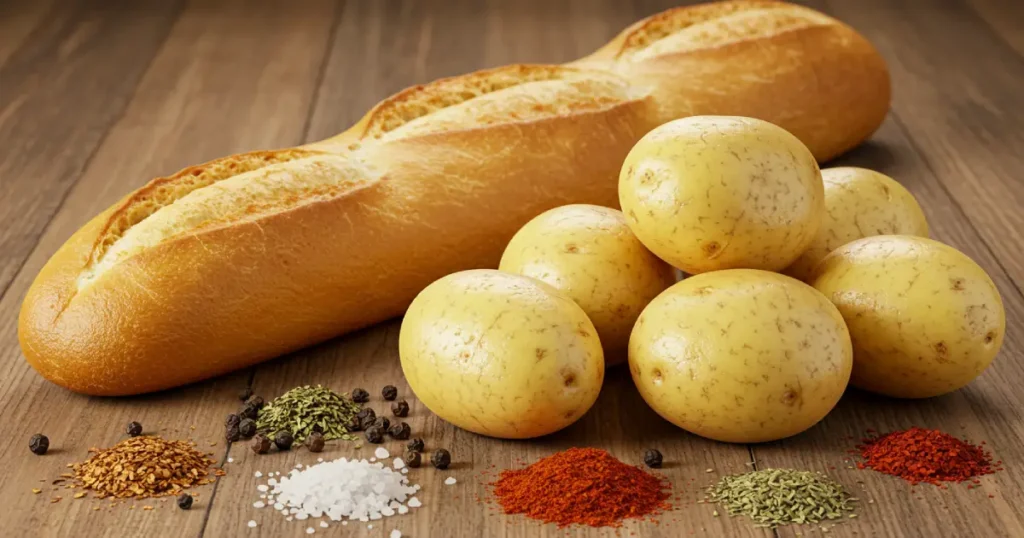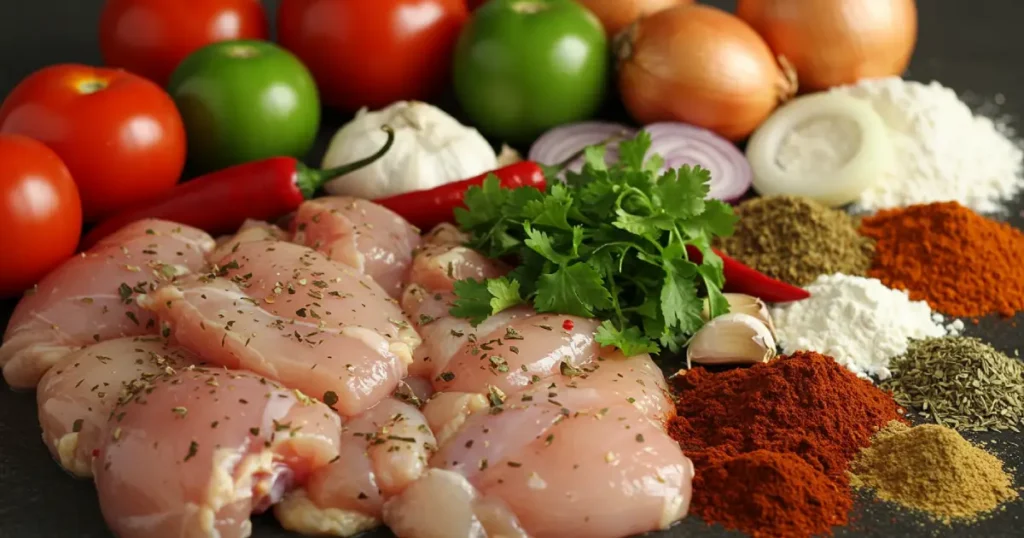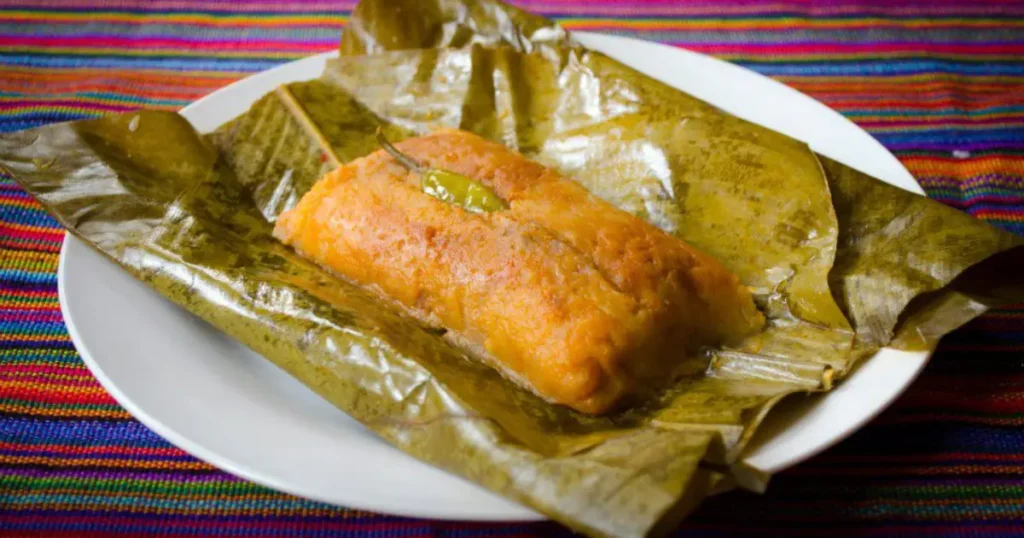Paches de Guatemala: Discover Quetzaltenango's Unique Potato Tamales

Guatemala's culinary landscape is a vibrant mosaic of ancient Mayan traditions, Spanish colonial influences, and rich, locally sourced ingredients. While corn-based tamales are a cornerstone of this heritage, a unique and equally beloved variation hails from the cool highlands, particularly the department of Quetzaltenango (Xela): the Paches de Guatemala. These hearty, flavorful potato tamales, affectionately known as "Paches," offer a distinct taste and texture that set them apart, making them a cherished Thursday tradition and a must-try for anyone exploring the depths of Guatemalan gastronomy.
Join us as we delve into the world of paches guatemala, uncovering their origins, the secrets to their preparation, and the cultural significance that makes them a true gem of the region.
What are Paches? A Guatemalan Culinary Surprise
For those unfamiliar with the term, a pache de guatemala (singular) or paches de guatemala (plural) might initially be mistaken for just another tamal. However, the defining characteristic of a pache lies in its primary ingredient: potato. Instead of the traditional corn masa (dough) used in most tamales across Mesoamerica, paches are made from a hearty, savory potato dough. This fundamental difference gives paches a unique texture – softer, denser, and with a distinct earthy sweetness from the potatoes – that contrasts beautifully with the flavorful filling they encase.
The name "pache" is thought to be a shortened version of "tamal de papa" (potato tamal). While their exact origin story is woven into local folklore, they are strongly associated with Quetzaltenango, Guatemala's second-largest city, often referred to as Xela. Here, paches are not just a food item but a deeply ingrained cultural tradition, famously enjoyed on Thursdays. This "Jueves de Paches" (Thursday of Paches) tradition sees vendors and homes alike preparing and savoring these delightful potato parcels.

Like their corn-based cousins, paches consist of this unique potato masa, a rich recado (sauce), and a meat filling, typically chicken or pork. The entire creation is then lovingly wrapped in banana leaves or maxán leaves (a large, aromatic leaf common in Guatemalan cooking), which impart a subtle, unique fragrance during the steaming process.
The Anatomy of a Pache: Ingredients that Define a Highland Delicacy
The soul of paches guatemala lies in its carefully chosen ingredients, which come together to create a symphony of flavors and textures unique to this highland specialty.
The Potato Masa: The Heart of the Pache
Unlike the corn masa of chuchitos or tamales colorados, the base of a pache is, of course, potato. Specific types of potatoes are often preferred, typically starchy varieties that mash well and provide a good consistency.

- Potatoes: The star ingredient. These are boiled or steamed with their skins on until tender, then peeled and mashed while still warm. The mashing needs to be thorough to achieve a smooth consistency, though some prefer a slightly more rustic texture.
- Bread or Pan Francés: A unique addition to pache masa is stale bread, often a type of Guatemalan bread roll similar to a French baguette (pan francés). The bread is typically soaked in water or broth, squeezed of excess liquid, and then crumbled or blended into the mashed potatoes. This helps to bind the masa, absorb excess moisture, and contributes to the overall texture and flavor.
- Seasonings: The potato masa is seasoned with salt and sometimes a bit of consomé (chicken bouillon powder) for added flavor. Some recipes also call for a small amount of fat, like lard or oil, to enrich the dough, though this is less common than in corn tamales. Achiote (annatto) can also be added to the masa for a subtle yellow or orange hue, though the recado usually provides the main color.
The goal is to create a potato dough that is flavorful, firm enough to hold its shape, but still tender and moist after steaming.
The Recado and Filling: A Burst of Flavor Inside
The recado (sauce) and filling are what give paches de guatemala their savory punch. This is often a rich, red sauce, similar in some respects to those used in other Guatemalan tamales, but with its own character.

- Meat: Chicken and pork are the most common choices for the filling. The meat is usually cooked separately first or simmered directly in the recado until tender. It's often shredded or cut into small, manageable pieces. Some paches might even feature a small piece of chili relleno (stuffed pepper) as part of the filling – a Quetzaltenango specialty.
- Tomatoes and Tomatillos: These form the base of the recado, providing acidity and sweetness. Roasting them beforehand enhances their flavor.
- Chiles: Chile guaque and chile pasa are frequently used for their rich color and mild to moderate, smoky heat. Chile pimiento (bell pepper) is also a common ingredient, adding sweetness and color.
- Aromatics: Garlic and onions are indispensable for building a savory foundation.
- Spices and Herbs: Achiote is key for color and a subtle earthy flavor. Other common spices include cumin, oregano, and sometimes thyme or a bay leaf.
- Thickeners: Similar to other recados, toasted bread, ground pepitoria (pumpkin seeds), or even a bit of the potato masa itself can be used to thicken the sauce to the desired consistency.
The meat is typically combined with this flavorful recado, ensuring every bite of the pache is packed with taste.
The Wrapping: Banana or Maxán Leaves

The choice of wrapping material significantly influences the final aroma and moisture of the pache de guatemala.
- Banana Leaves: Widely available and commonly used, banana leaves impart a subtle sweet fragrance and help keep the paches moist during the long steaming process. They are typically passed briefly over a flame or blanched in hot water to make them pliable before use.
- Maxán Leaves (Calathea lutea): These large, durable leaves are also a traditional choice, particularly in certain regions. They contribute a distinct, slightly earthy aroma that is highly prized. Like banana leaves, they need to be cleaned and softened before use.
The leaves are cut into appropriately sized rectangles, large enough the generously encase the potato masa and filling.
Crafting Paches: A Labor of Love and Tradition
Making paches de guatemala is a process that, while involving several steps, is a rewarding culinary endeavor, often undertaken as a family or community activity. Here’s a general outline of how these unique potato tamales are made:
Step-by-Step Guide to Making Paches
1. Prepare the Wrapping Leaves:
- If using banana leaves, cut them into rectangular pieces (approximately 10x12 inches). Quickly pass each piece over an open flame or blanch in boiling water for a few seconds until they become flexible and turn a brighter green. Wipe them clean.
- If using maxán leaves, wipe them clean and cut them into suitable sizes. They may also benefit from a brief warming to improve flexibility.
2. Cook and Mash the Potatoes:
- Boil or steam the potatoes in their skins until they are very tender and can be easily pierced with a fork.
- While the potatoes are still warm, peel them. Mash them thoroughly in a large bowl until smooth. Some prefer to pass them through a food mill or ricer for an extra-smooth consistency.
3. Prepare the Bread and Masa Additions:
- Soak the stale bread (crusts removed) in water or chicken broth until soft. Squeeze out all excess liquid.
- Crumble or blend the soaked bread and add it to the mashed potatoes.
- Season the potato mixture with salt (and consomé or achiote if using). Mix thoroughly until a cohesive dough forms. The consistency should be thick and spreadable, not too wet. Adjust with a little potato cooking water or masa harina (corn flour) if needed, though this is less traditional.
4. Prepare the Recado and Meat Filling:
- Cook the chosen meat (pork or chicken) until tender, then shred or dice it.
- To make the recado, roast the tomatoes, tomatillos, bell peppers, onions, and garlic. Rehydrate the dried chiles (guaque, pasa) by soaking them in hot water.
- Blend the roasted vegetables, rehydrated chiles (seeds removed for less heat), achiote, and other spices until smooth.
- In a pot, sauté the blended recado for a few minutes to meld the flavors. If it’s too thick, add a little chicken broth or water. Season with salt and pepper to taste.
- Add the cooked meat to the recado and simmer for a few minutes, allowing the meat to absorb the sauce's flavors. The filling should be moist but not overly liquid.
5. Assemble the Paches:
- Lay a prepared leaf flat. If using banana leaves, you might use two layers, with the veins running in opposite directions for strength.
- Place a generous portion (about ½ to ¾ cup, depending on desired size) of the potato masa in the center of the leaf.
- With moistened hands or the back of a spoon, spread the masa into a rectangle or oval, creating a slight indentation in the center.
- Spoon a portion of the meat and recado filling into the indentation. Some recipes also include an olive or a strip of red bell pepper here.
- Carefully fold one long side of the leaf over the filling, then the other long side, overlapping them.
- Fold the two shorter ends of the leaf towards the center, creating a neat, rectangular package. The folds should be secure to prevent leakage.
- Tie the pache with kitchen twine or strips of banana leaf (called cibaque) to secure the package. Paches are often tied in pairs.
6. Steam the Paches:
- Prepare a large steamer pot (tamalera) with a rack at the bottom. Add enough water to the pot, ensuring it stays below the rack. You can line the bottom of the steamer with leftover pieces of banana leaves.
- Carefully arrange the paches on the rack, usually standing them upright or laying them flat in layers. Do not pack them too tightly, allowing steam to circulate.
- Cover the paches with more banana leaves or a clean kitchen towel before putting the lid on the pot. This helps to trap the steam.
- Bring the water to a boil, then reduce the heat to a steady simmer. Steam the paches for 1.5 to 2 hours. The cooking time can vary depending on the size of the paches and the steamer.
- To check for doneness, carefully remove one pache. Let it cool for a few minutes. The pache is cooked when the potato masa is firm, cooked through, and doesn't stick excessively to the leaf when unwrapped. The internal temperature should be hot.
7. Serve and Savor:
- Once cooked, let the paches guatemala rest for about 10-15 minutes before serving. This allows them to firm up further.
- Paches are traditionally served warm, directly in their leaf wrapping. Diners unwrap them at the table.
- They are often enjoyed on their own or with a simple accompaniment like a piece of pan francés to soak up any extra recado. Unlike corn tamales, they are less commonly topped with salsa or cheese, as their rich potato flavor and recado are usually sufficient.

Jueves de Paches: A Quetzaltenango Tradition
The connection between paches de guatemala and Thursdays in Quetzaltenango is a fascinating cultural phenomenon. "Jueves de Paches" (Pache Thursday) is a weekly observance where families prepare and eat paches, and street vendors do a brisk trade in these potato delights.
The exact origins of this Thursday tradition are debated. Some theories suggest it began as a practical way to use up leftover ingredients from the week before the main market days. Others link it to specific religious or social customs of the past. Regardless of its precise beginnings, Jueves de Paches is a tradition that has been passed down through generations and remains a strong identifying feature of Quetzalteco culture. On Thursdays, the aroma of steaming paches fills the air in Xela, and enjoying a pache becomes a communal experience, a comforting ritual that marks the rhythm of the week.
Paches vs. Other Guatemalan Tamales: A Delicious Distinction
While paches share the "tamal" lineage, their potato base creates a notable distinction from other beloved Guatemalan varieties:
- Chuchitos: Small, firm corn masa tamales, typically pork or chicken filling in a red recado, wrapped in corn husks. Paches are larger, potato-based, and wrapped in banana or maxán leaves.
- Tamales Colorados (Red Tamales): Larger corn masa tamales with a rich red recado, meat, olives, capers, and bell peppers, wrapped in banana leaves. While both paches and tamales colorados use banana leaves and a red recado, the masa (potato vs. corn) is the key difference.
- Tamales Negros (Black Tamales): Sweet corn masa tamales with a dark, mole-like sauce containing chocolate, spices, raisins, and prunes. These are distinctly different from the savory paches.
- Tamalitos de Chipilín: Small, plain corn masa tamales seasoned with chipilín leaves, often served as an accompaniment. Paches are a complete, filled dish.
The pache de guatemala proudly stands as a unique member of this diverse tamal family, offering a different but equally satisfying experience centered around the humble potato.
The Enduring Allure of Paches
The popularity of paches guatemala, especially in the highlands, is a testament to their unique appeal:
- Hearty and Comforting: The dense potato masa makes paches incredibly satisfying and warming, perfect for the cooler climate of Quetzaltenango.
- Unique Flavor Profile: The combination of savory potato, rich recado, and tender meat, all infused with the subtle aroma of the leaf wrapping, is a distinctive and delicious experience.
- Cultural Identity: For Quetzaltecos, paches are more than just food; they are a symbol of regional pride and a cherished weekly tradition.
- A Culinary Adventure: For visitors and food enthusiasts, trying a pache offers an authentic taste of Guatemala's diverse culinary heritage, going beyond the more common corn-based dishes.
Whether you seek them out on a "Jueves de Paches" in Xela, are lucky enough to be invited to a home where they are being made, or decide to embark on the rewarding journey of making them yourself, paches de guatemala promise a memorable and flavorful encounter with one of Guatemala's most unique culinary treasures.
Paches – A Potato Embrace from the Guatemalan Highlands
Paches de Guatemala are a remarkable example of culinary ingenuity, transforming the humble potato into a celebrated dish that warms the hearts and satisfies the appetites of Guatemalans, particularly in the highlands of Quetzaltenango. More than just a "potato tamal," the pache is a cultural icon, a Thursday tradition, and a delicious testament to the regional diversity of Guatemalan cuisine. Its hearty texture, rich flavors, and the communal spirit often associated with its preparation and consumption make the pache de guatemala an experience to be savored. As you explore the incredible world of Guatemala Food, be sure to seek out this unique specialty – a true comfort food that offers a delicious embrace from the land of eternal spring.

Leave a Reply